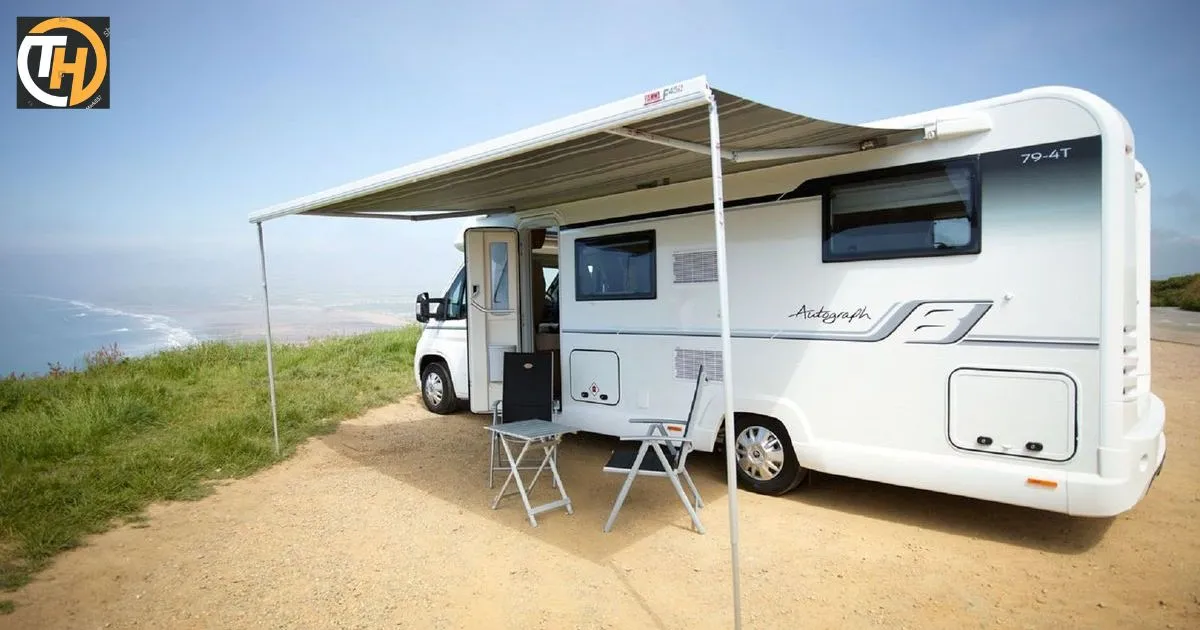To transport a water heater in a pickup truck may seem like a daunting task, but with the right approach and safety measures, it can be a smooth process. Whether you’re replacing your water heater or moving to a new location, this guide will walk you through every step, ensuring the safe and secure transportation of your water heater.
Moving a water heater in a pickup truck requires careful planning, as these appliances are heavy and potentially delicate. It’s crucial to prevent any damage during the transportation process and ensure that the heater remains in working condition. In this guide, we’ll explore the best practices for safely moving a water heater in a pickup truck.
Understanding Your Water Heater
Types of Water Heaters

Types of Water Heaters
Before transporting your water heater, it’s essential to know the type you’re dealing with. Water heaters come in various forms, such as traditional tank-style heaters and tankless models. Each type has unique features and considerations for transport.
Heater Dimensions
Measure your water heater’s dimensions, including height, width, and depth. This information will help you determine the appropriate truck size and ensure a secure fit during transport.
Reasons to Transport Your Water Heater
Relocation
Moving to a new home or location often requires transporting your water heater. It’s more cost-effective than purchasing a new one and ensures you have hot water upon arrival.
Replacement
If you’re upgrading to a new water heater, you may need to transport the old one to a disposal facility or recycling center. Proper transport ensures safe disposal.
Repair or Maintenance
Occasionally, you may need to transport a water heater for repair or maintenance. Ensuring its safe arrival is crucial for a quick fix and continued use.
Safety First: Precautions When Transporting
Ensuring the safe transport of your water heater involves taking several crucial precautions. These steps are vital in preventing accidents, reducing the risk of damage, and ensuring a smooth and secure journey for your water heater.
Disconnect Gas or Power
The first and most critical step is to disconnect the gas or electricity supply to your water heater. Failing to do this can have severe consequences. Gas leaks can be hazardous, and electrical connections left intact may lead to electrocution or short circuits during transport.
To disconnect the power supply, switch off the water heater’s breaker in your home’s electrical panel or fuse box. For a gas water heater, locate the gas shut-off valve, usually located on the gas supply line leading to the heater. Turn the valve to the “off” position to stop the gas flow.
Drain the Water Heater
An essential precaution is to empty the water heater to reduce its weight during transport and prevent potential leaks. Water heaters are incredibly heavy when full, and the added weight could lead to structural damage, especially if your water heater is older and not designed for transportation while full.
To drain the water heater, locate the drain valve, which is typically situated near the bottom of the tank. Place a hose onto the drain valve, ensuring a secure connection, and direct the other end of the hose to a safe drainage area, preferably a floor drain or an exterior location. Open the drain valve, allowing the water to flow out. Be cautious, as the water may be scalding hot, and it’s important to prevent burns or injuries during this process. Emptying the tank will also minimize the risk of damage from water splashing inside the tank during the journey.
Protect the Tank
To avoid dents, scratches, and other forms of damage to the exterior of the water heater during transport, it’s advisable to provide extra protection. Consider wrapping the water heater in blankets or foam padding, creating a cushioning layer around the tank. This added layer of protection absorbs shocks and prevents surface damage. Secure the padding in place with duct tape or straps.
Taking these safety precautions ensures that your water heater remains undamaged, the journey is incident-free, and you can enjoy hot water at your new location without any issues. Always prioritize safety when handling water heaters, and exercise caution throughout the entire process.
Tools and Materials You’ll Need
When it comes to safely transporting a water heater in a pickup truck, having the right tools and materials on hand is essential. Here’s a list of what you’ll need:
Ratchet Straps
Ratchet straps are a must-have for securing the water heater in the truck bed. These sturdy straps are designed to hold your water heater in place, preventing any movement or shifting during transportation. They provide stability and ensure that your water heater remains securely positioned.
Padding Materials
To safeguard your water heater from potential damage during transit, especially when you need to lay a water heater on its side, you’ll require suitable padding materials. Blankets, foam, or other protective materials serve as a protective layer around the water heater. They act as a cushion, absorbing shocks or impacts and preventing dents, scratches, or surface damage. Properly securing these padding materials in place is vital to ensure their effectiveness.
Basic Tools
Depending on your water heater’s type and connections, you may need basic tools to disconnect it from its power source and plumbing. These tools can include wrenches, pliers, and screwdrivers. Having the necessary tools readily available is essential for safely and efficiently disconnecting your water heater.
By ensuring you have these tools and materials at your disposal, you’ll be well-prepared for the task of transporting your water heater in a pickup truck. These items contribute to the safety and security of both your water heater and the transportation process, ultimately providing peace of mind during the move.
here’s the table based on the key points for transporting a water heater in a pickup truck:
| Step | Key Points |
| 1. Measure the water heater’s dimensions | Accurate measurements for size and weight. |
| Consider the height, width, and length. | |
| Make a note of the water heater’s weight. | |
| 2. Gather necessary tools and materials | Ratchet straps or ropes for securing. |
| Moving blankets or padding for protection. | |
| Basic tools if any disassembly is required. | |
| 3. Prepare the pickup truck bed | Clean and clear the truck bed for a flat surface. |
| Add padding or blankets to prevent damage. | |
| 4. Secure the water heater in the truck | Use ratchet straps or ropes for a secure fit. |
| Ensure the heater is upright and centered. | |
| 5. Drive carefully and follow safety rules | Drive cautiously to prevent shifting. |
| Follow traffic laws and ensure clear visibility. |
How to Transport a Water Heater in a Pickup Truck
Step 1: Measure Your Truck Bed
Measure your truck bed to ensure it can accommodate the water heater securely. It’s essential to have precise measurements for a snug fit.
Step 2: Prepare the Water Heater
Disconnect the water heater from its plumbing and ensure it’s fully drained. Make sure all gas or power connections are disconnected.
Step 3: Use Padding
Place padding materials at the bottom of the truck bed to create a cushion for the water heater. This minimizes the risk of damage during transport.
Step 4: Position the Water Heater
Carefully position the water heater in the truck bed, ensuring it remains upright. If the water heater is tall or heavy, consider having assistance to lift and position it safely.
Step 5: Secure with Straps
Use sturdy ratchet straps to secure the water heater in place. Anchor the straps to the truck’s anchor points, if available, to prevent shifting during transport.
Step 6: Double-Check Security
Before hitting the road, double-check that the water heater is snugly and securely fastened. Gently shake the truck to ensure it doesn’t move, and re-tighten the straps if necessary.
Benefits of Using Electric
Electric water heaters are energy-efficient and environmentally friendly. Learn about the advantages of using an electric water heater to provide hot water for your home.
FAQs
Q: Can I transport a water heater in any type of pickup truck?
A: You should choose a truck that can comfortably accommodate the water heater’s dimensions and weight.
Q: Is it essential to disconnect the power and plumbing connections?
A: Yes, it’s crucial for safety. Disconnecting power and draining the tank reduces the risk of accidents.
Q: Do I need professional help to transport a water heater?
A: While it’s possible to do it yourself, professional movers have the experience and equipment to ensure safe transport.
Q: What precautions should I take during transport to prevent damage?
A: Use padding, secure straps, and drive carefully to avoid sudden stops or sharp turns.
Q: Can I transport a water heater on its side?
A: It’s best to keep the water heater upright to prevent damage to the internal components.
Conclusion
Transporting a water heater in a pickup truck might sound like a complex operation, but it doesn’t have to be. With the right precautions and essential tools, you can ensure a smooth and safe journey for your water heater. Whether you’re moving to a new location, upgrading your water heater, or just transporting it for maintenance, these guidelines will help safeguard your appliance.
The initial step is all about safety – before embarking on any part of the transport process, it’s crucial to disconnect the gas or electricity supply to the water heater. For gas-powered heaters, ensure that the gas supply is entirely shut off, and for electric heaters, switch off the electricity at the circuit breaker. This first safety measure sets the stage for a secure transport operation, reducing any risks of accidents.











